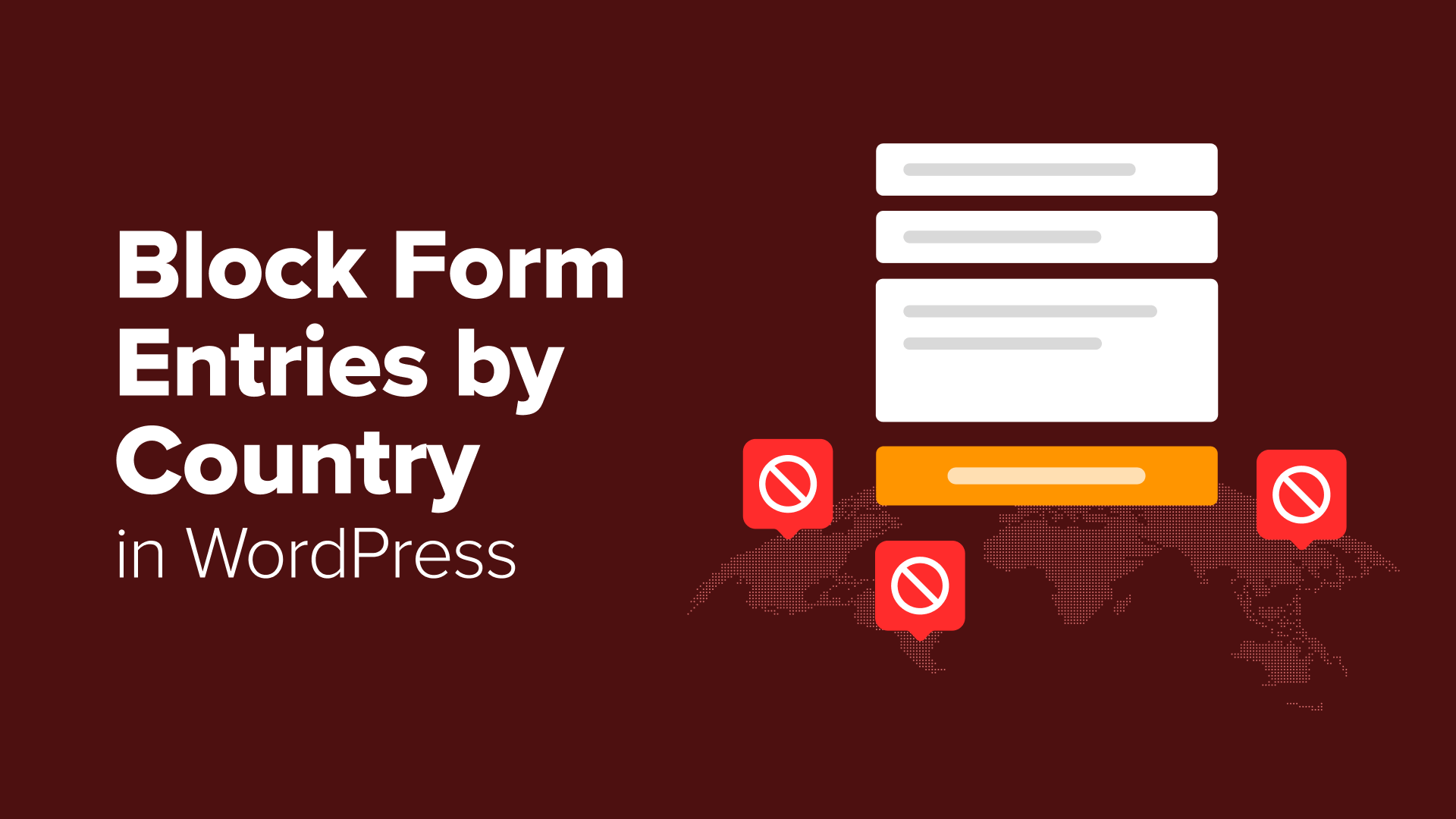Blog
How I Block WordPress Form Entries From Certain Countries

Introduction
Managing a WordPress website often involves dealing with various types of user submissions, especially when it comes to forms. However, it’s not uncommon to encounter unwanted entries from specific countries. In this guide, we’ll explore effective methods to block WordPress form submissions from certain regions, helping you maintain the integrity of your site’s data.
Understanding the Importance of Blocking Entries
Why Block Form Entries?
Blocking entries from undesired countries can significantly enhance your website’s security and improve the quality of user engagement. By filtering out unwanted submissions, you can:
- Reduce Spam: Limit fake entries that clutter your database.
- Enhance Data Quality: Ensure that the data you collect is relevant and useful.
- Save Resources: Prevent overhead from managing unnecessary data and submissions.
Methods to Block Form Submissions by Country
Utilizing Geo-Blocking Plugins
One of the most straightforward ways to block form entries from specific countries is by employing geo-blocking plugins. These plugins leverage IP geolocation data to identify where a user is accessing your site from.
Recommended Plugins
-
IP2Location Country Blocking: This plugin allows you to block visitors based on their IP addresses linked to certain countries. It’s user-friendly and integrates seamlessly with most WordPress forms.
-
WP GeoIP Country Redirect: While primarily designed for redirecting users, this plugin can also be configured to block form submissions.
- Geotargeting WP: This powerful plugin provides advanced features for targeting users based on their geographic location, allowing you to control form access efficiently.
Implementing Custom Code
If you prefer a more hands-on approach or are comfortable with coding, you can implement custom scripts to block submissions. This method requires a bit of technical know-how but offers greater flexibility.
Steps for Custom Coding
-
Identify User Location: Use a service like GeoIP2 or MaxMind to determine the user’s geographic location based on their IP address.
- Use Conditional Logic in Forms: Modify your form’s submission handler to check the user’s location before accepting the form data. If the location matches a blocked country, you can reject the submission.
php
add_action(‘wp_ajax_nopriv_your_form_action’, ‘your_form_function’);
add_action(‘wp_ajax_your_form_action’, ‘your_form_function’);
function your_form_function() {
// Check user IP and determine country
// Example code for demonstration purposes
$blocked_countries = [‘CountryCode1’, ‘CountryCode2’];
$user_country = get_user_country($_SERVER[‘REMOTE_ADDR’]);
if (in_array($user_country, $blocked_countries)) {
wp_die('Access denied from your location.');
}
// Process the form submission}
Using Third-Party Services for IP Geolocation
In addition to plugins and custom coding, several third-party services can assist in blocking unwanted form entries. These services often offer robust APIs to check and filter incoming traffic based on geographical location.
Popular Services
- Plivo
- GeoIPify
- IPinfo
These services provide easy-to-use APIs that integrate well with your WordPress site, allowing you to check user locations and block submissions accordingly.
Leveraging Web Application Firewalls
Web Application Firewalls (WAF) are an essential component of website security. Many WAFs include features that allow for geolocation-based blocking.
Benefits of Using WAFs
-
Comprehensive Security: WAFs not only block unwanted form submissions but also protect your site from various attacks.
- Easy Configuration: Most WAF services offer user-friendly dashboards for managing geo-blocking settings without extensive technical knowledge.
Best Practices for Blocking Entries
While implementing geo-blocking is beneficial, it’s essential to follow best practices to ensure you’re not excluding legitimate users or damaging your site’s reputation.
Conduct Data Analysis
Before blocking entire countries, analyze your form submissions to ensure that the locations you block are genuinely problematic. This assessment helps prevent mistakenly blocking legitimate users.
Provide a Contact Option
Consider providing an alternative contact option for users from blocked regions. This will enable genuine users to reach out and engage with your business without going through the form submission route.
Monitor and Adjust Your Strategy
Regularly monitor your website traffic and form submissions. Adjust your geolocation settings and thresholds as necessary to stay ahead of any emerging threats or changing patterns in user submissions.
Conclusion
Blocking WordPress form entries from certain countries can be an effective strategy to enhance your site’s security and data quality. Whether you choose to implement plugins, custom code, or third-party services, ensuring the right tools are in place will help safeguard your site against unwanted submissions. By following the best practices laid out in this guide, you can strike the right balance between security and user engagement, creating a better experience for your genuine users. Keep refining your approach, and your website will remain a trusted space for relevant interactions.
